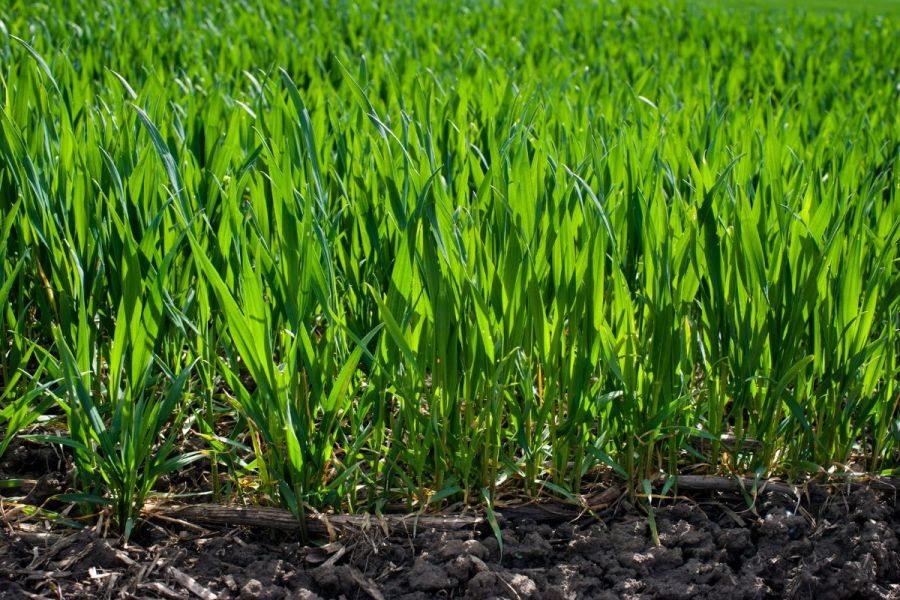A wealth of nutritional data has been collected during the past seven years, allowing the analysis of regional and national trends. CPM hears how one farmer has been contributing to the data set and the benefits tissue testing has had on his business.
“Since we started to highlight the issue we’ve seen a reduction in the number of cereal crops that are being reported deficient in magnesium.”
By Janine Adamson and Rob Jones
Finessing crop nutrient requirements through utilising regular tissue analysis has helped one East Yorkshire farmer to grow an award winning crop of winter wheat while contributing to a national data set.
Peter Southwell and his family run Sancton Hill Farm near Beverley, overseeing 250ha of arable cropping. A long-time participant in the Cereal Yield Enhancement Network (YEN), the farm won last year’s YEN award for the highest yield in the northern region with a 12.09t/ha crop of Champion winter wheat.
Peter credits much of his success to analysing crop nutrients throughout the growing season and making subsequent corrections using regular foliar applications, something that’s supported by his agronomist Matthew Beech from Agrii.
Matthew says having used SAP testing through a previous farming role, he continued to have an interest in nutrition when he switched over to agronomy. And with Peter already undertaking tissue sampling before participating in YEN, it made sense to compare the two methods, so no stone was left unturned, he adds.
“The aim is understand what’s going on in the crop to maximise output where we can,” explains Matthew. “We want to identify issues before we can physically see them in the field and address the ‘hidden hunger’ by delivering nutrition to the plant through its foliage for optimum uptake.”
Two years ago, Sancton Hill Farm teamed up with Chris Bond, product manager for crop nutrition at FMC, to take part in the company’s nationwide tissue testing programme. This was with the goal of improving the farm’s YEN results even further.
“With Chris, we had the chance to compare and contrast three different tests, including SAP and conventional tissue testing, as well as utilising his expertise in nutrition,” explains Peter.
But how do the tests differ? Conventional tissue testing reports the level of nutrients in a sample whereas SAP analysis has been coined as a blood test for a plant – offering a complete overview of a plant’s nutrient uptake while detecting deficiencies and/or excesses before visible symptoms appear.
But why did FMC commit to running such a programme? Chris says it began when the company started to see trends in nutrient analysis but didn’t have the information to back up such hunches. “We started to collect data with a view to building a picture of trends over a few years.
“At the beginning we only looked at cereals, but since then testing has expanded to include a number of other crops. However, cereals is the biggest data set with almost 5,700 samples from seven years of testing,” he says.
For the farmer or agronomist, sample collection is straightforward, says Matthew. “For both SAP and conventional testing, you put the sample in the bag, then into a pre-paid envelope, which you send off the same day.
“We take samples before each plant protection product application as most of the available nutrition products have good compatibility, allowing them to be applied at the same time as the fungicide programme, for example. This reduces the requirement for additional application passes with the sprayer.
“In some cases, we found the SAP testing detected deficiencies sooner than tissue testing. An example being, magnesium deficiency showed up at T0 with a SAP test but not until T1 from tissue testing.”
The significant amount of data collated by FMC means Chris and his colleagues have seen both long-term trends and seasonal differences. “One message we’ve reinforced during the years is the importance of applying magnesium throughout the whole season, not just at the flag leaf stage,” he comments.
“Since we started to highlight the issue, backed by the results from the programme, we’ve seen a reduction in the number of cereal crops that are being reported deficient in magnesium.
“It has many functions, particularly its role in chlorophyll production and light capture for photosynthesis, but also releasing ATP (known as a cell’s energy currency) in the photosynthesis pathway,” explains Chris. “So if you don’t have sufficient magnesium, your plant is never going to grow to its full potential through the season, especially building proteins and producing yield.”
Another trend which stands out from the latest data is the increase in crops short of zinc, something which seems to have occurred during the past couple of years, says Chris. As a result, this has become a greater focus for the company.
“Although growers know zinc is important, it can be somewhat overlooked. However, it’s involved in a lot of biological processes such as early root development, plant hormone production, cold stress responses, building chlorophyll and activating the enzymes necessary for protein synthesis, so any increase in deficiency is a cause for concern.”
This year has also seen more crops with below optimum levels of sulphur and boron. “This is likely to have been caused by the extended wet weather we’ve experienced with the boron and sulphur potentially leaching from the soil. Because zinc becomes insoluble in cold, wet soils, it’s then unavailable to the crop,” explains Chris. “The cold weather also slows the biological processes in soils, which will further reduce zinc availability.”
Having such a comprehensive data set has allowed FMC to analyse regional trends around the country too. For some nutrients such as zinc, copper and sulphur, a north-south divide is becoming evident, with crops in the South and East often containing lower levels.
Elsewhere, the North-East (including Yorkshire) has shown lower than average levels of magnesium deficiency during the past seven years alongside boron and manganese deficiency. However, there’s generally better levels of in-tissue nutrients than the national average.
“Although zinc levels are better than the national average in the North-East, it’s still a relatively high level of deficiency,” comments Chris. “At the same time, you’d expect manganese issues on the sandy and high-pH chalky soils which are common in the region.”
Reflecting on these results in respect to his farm, Peter says testing during recent years has detected the classic manganese deficiency you’d expect on the Wolds, as well as some issues with zinc and copper, particularly in dry springs.
“This year, with it being wetter, while we did detect some issues with zinc, we didn’t see the low levels of copper we might otherwise have expected, which then makes it harder to know if we should be applying foliar copper as a precaution,” he continues.
“During the years we’ve started to build up a pattern, but there are differences each season. For example, this year we had low levels of calcium which we haven’t seen previously.”
Matthew adds: “We’ve seen a few different issues this year that we didn’t expect, and those differences each season underline how important constant monitoring is to know what’s actually going on in the crop.”
Where growers experience micronutrient deficiencies, the use of foliar products is one of the easiest ways to correct problems during the growing season, suggests Chris.
“You’re applying a relatively small amount of that nutrient to take the crop from deficiency to sufficiency, and are bypassing problems in the soil such as temperature which may be causing that deficiency in the first place,” he stresses.
This has been the approach adopted by Peter, who says he uses FMC Zinic as a source of foliar zinc. “Last year we also used the FMC Magnor magnesium product. By the time we’d got to the end, testing at T3 showed that we’d pretty much cleared all of the nutritional deficiencies in the crop. Nortrace Uptake Plus (phosphate) and Feeder K (potassium) from Agrii were also applied when necessary,” he comments.
Matthew says the farm has an issue with phosphate due to the calcareous nature of the soils, which lock-up quickly if TSP (triple super phosphate) is applied. “We can’t meet all of the crop’s demand through foliar applications, so are using digestate in the rotation to try to build the indices in the soil through organic sources.”
He adds there was a particular focus on magnesium and zinc last year, the success of which was demonstrated by the resulting crop yield and grain analysis results, which showed protein, magnesium and zinc levels all at the higher end.
“It was encouraging to see in the grain analysis from the YEN report, showing we’d met the demand of the crop through foliar applications driven by the analysis results, ensuring nutrient deficiency wasn’t the limiting factor on yield,” comments Matthew.
Furthermore, Peter says grain phosphate results were above average, which given the relatively high yield for the year, showed the crop had utilised what was applied. “I don’t want to use a lot of bagged nutrients – phosphates in particular because they just get locked-up – although we’ll apply DAP down the spout when drilling oilseed rape or spring barley to feed the crop from underneath, while continuing to use digestate and compost.
“We also practice minimal ‘scratch’ tillage, so tend to keep nutrients in the top layer of soil and recycle them as fast as we can,” he explains.
While the historic focus has been on crop testing, Matthew adds that the farm is also looking to improve nutrient use efficiency (NUE). “This year we applied fulvic acid with the foliar nutrient applications to try and improve uptake by the crop.
“We’re also undertaking trials looking at the level of bagged nitrogen versus foliar nitrogen – again with the addition of fulvic acid – and will analyse the grain at harvest to assess NUE and compare that with the field yield maps,” he concludes.
This article was taken from the latest issue of CPM. Read the article in full here.
For more articles like this, subscribe here.
Sign up for Crop Production Magazine’s FREE e-newsletter here.




